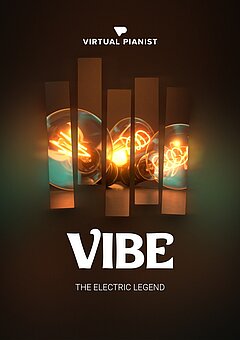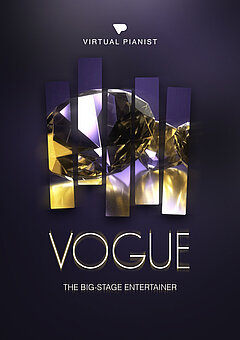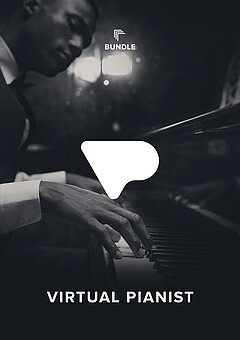Should You Use a Live Electric Piano or a VST?
How to decide what’s right for your track based on price, skill, setup and more, and get the best sound for your budget
MAY 5TH, 2023
A quick look at costs
If you’re asking yourself, “Do I need a real electric piano?”, the first consideration is naturally price. A real instrument typically costs thousands ... While that can be worth it for a great instrument, a virtual keyboard VST typically costs less than $200. When you’re running your own music production business, costs quickly add up — plus, you want to leave some wiggle room for upgrading other parts of your setup!
Now for option 2, let’s say you’re recording a live keyboardist who has their own instrument; you’ll want to budget time for a couple hours in a studio if you don’t have a treated room. A couple hours of your musician’s time plus the rental costs can easily add up to over $1000. If it fits in your budget and it’s worth it to you, go for it — but make sure you’re happy with the investment.
There’s also option 3: recording a musician in your own studio space. If you have decent isolation and sound absorption, good microphones to capture the sound of the keys, and your musician can get their instrument through the door (don’t take this as a given!), you only have to pay your keyboardist for their time. This can be a great compromise if you already have the equipment you need, though the quality of your gear really matters.
Are you a keyboardist?
Issues of price aside, if you aren’t 100% comfortable on the keys yourself and aren’t ready to hire a keyboardist, a real Rhodes will naturally only get you so far. Doing everything inside a DAW will make life much easier, as you can play in the keyboard part as slowly as you need to get it just right and then quantize the notes to your liking. Of course, you can also type in the notes manually if you just need the timbre of an electric piano and don’t actually need the touch of a human player (deep house music in particular presents plenty of opportunities like this). There’s still a key limitation here, though: Unless you have a solid grasp of how to write for electric piano and how it feels to play, something will likely sound “off” about your playing.
There’s a much easier way, though ... one that doesn’t involve tons of MIDI manipulation or a deep understanding of how to get the best possible sound out of an electric piano. It even does the hard work of creating effective electric piano arrangements for you, so you can stay focused on the big-picture elements you want in place like chords and the character of the sound. That solution is Virtual Pianist VIBE, UJAM’s butter-smooth electric piano virtual instrument gives you the flexibility of the real thing but with pre-built style phrases that allow you to expand upon your ideas instantaneously. All you need to feed VIBE is a few chords and some note suggestions, then it takes care of the rest!
If you have a sound in your head with a few musical ideas but aren’t quite sure what the keys should be doing, VIBE is a perfect solution — there are no menus of different phrases to dive through, which is a huge barrier to accessibility with other “player piano” type plugins. If you do feel comfortable without the help of the Player features, there’s also an Instrument mode that allows you to play VIBE as you would any other electric piano VST. Provided that you want both, this is the way to go!
When you need a real electric piano
Now that we’ve covered some of the many uses of virtual keys in depth, it’s natural to wonder when it’s better to turn to an actual electric piano. This may seem flippant at first, but there’s a simple answer: when it makes more sense to do so. For example, if you’re an excellent keyboardist and you have a good sense of rhythm and timing (i.e. your performance doesn’t need much quantization) — and you have a real set of keys on hand — recording can be a better choice than sequencing.
Sample libraries of polyphonic instruments will never sound exactly like the instrument they capture for a simple reason: Each sample is a recording of all the interactions each note has with the instrument body and any amplification processes it undergoes. When you play multiple notes on a multi-note instrument at the same time, the instrument body will resonate in response to all the frequencies present. However, a sampled instrument has those resonances baked into each individual sample, which creates an unnatural buildup in certain frequency areas that is often subtle but still unnatural. If you’re looking for the most realistic possible sound, it’s difficult to get it from anything except the real thing; the addition of an excellent keyboardist makes for a winning combination!
That said, listeners are very unlikely to notice the difference, and as a producer you have to work with what you’ve got. In the majority of cases, using a virtual keyboard instrument will sound great if you feed it the right notes and process it well — especially one that removes as much of the hard work as Virtual Pianist VIBE!
Wrapping up
Should you want to add electric piano to your tracks, in a perfect world there’s nothing better than having access to the real thing, a great musician and the ideal recording environment. But if your business is just you and you’re producing in the box, that’s probably a tall order. When you’re creating music at a professional level, though, you don’t just want to get the job done; the result should sound as close as possible to what you envision!
Having a great virtual electric piano is essential in this case, all the more so if you use a ton of it in your music. If you’re not a trained keyboardist yourself and want something more than a few static chords, it helps to have a virtual keyboard that fills in the blanks ... and for that, there’s nothing more intuitive than VIBE. Regardless of which path you choose, have fun with the process. If you want more info writing for electronic piano, check out our companion article, The Ultimate Guide to Electric Piano!
About the Author
Harry Lodes is a copywriter, marketing consultant and content writer for audio and ecommerce brands. He lives in the Philadelphia area, releasing Eastern/Western hybrid EDM under the artist name KAIRI hearkening back to his roots in Berklee College of Music.
Stay up to date
Sign up and we’ll send you an e-mail with product news and helpful stuff every now and then. You may unsubscribe at any time.
Defy Limits
We develop software solutions that enable people to create, consume and interact with music.





